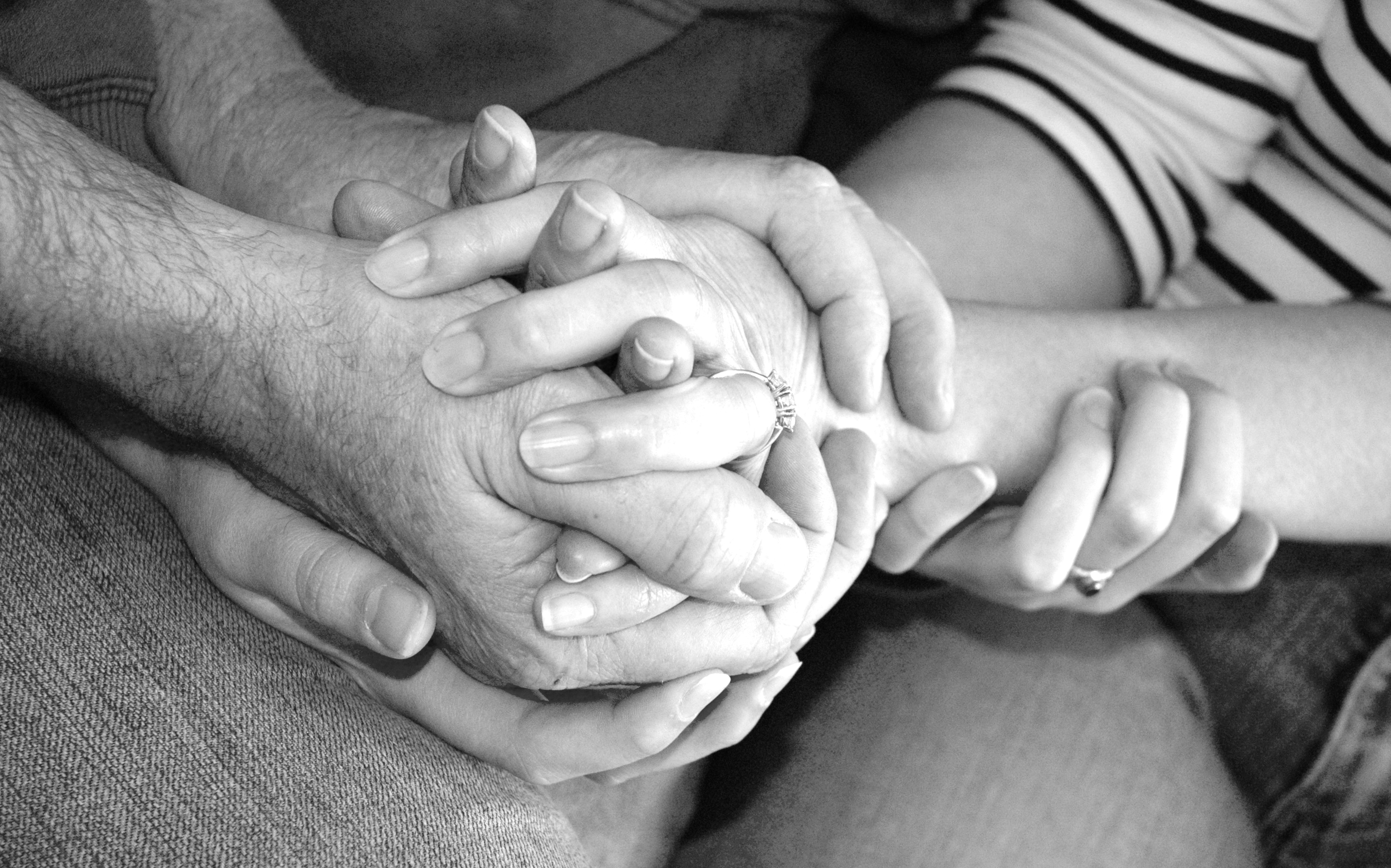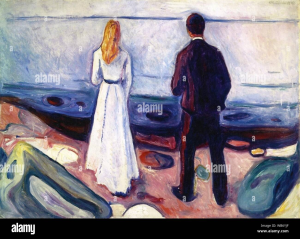Grief and loss can envelop us in a storm of emotion, leaving us disoriented and yearning for understanding. The profound pain experienced after losing a loved one can feel isolating, yet it is a universal journey known as the process of mourning. Coping with grief is not a linear path; instead, it often resembles a pendulum swing between acceptance and despair. Grief after death transforms our lives in unimaginable ways, compelling us to navigate loss while searching for ways to honor our beloved’s memory. As we embrace the importance of healing from loss, we find strength in shared stories, navigating through the darkest moments together.
The experience of bereavement is both deeply personal and profoundly shared—a bittersweet blend of sorrow and nostalgia for what once was. When we confront the aftermath of a loss, we often find ourselves on an emotional journey, one that requires us to embrace our feelings and explore the essence of our relationships. The process of grieving can bring forth a tumult of emotions, pushing us to unearth our memories and reflect on the impact of those we’ve lost. In this complex exploration of sorrow, individuals seek solace through various avenues for healing, forging paths that allow them to honor their loved ones while rediscovering themselves amid the turmoil. Acknowledging the myriad ways we cope with bereavement helps us connect with others who have faced similar challenges, ultimately reinforcing our collective resilience.
Understanding Grief and Loss
Grief and loss are universal experiences that can profoundly affect our lives, leading us through a spectrum of emotions. The first initial shock often leaves individuals in a haze, struggling to process the stark reality of their loss. For many, understanding grief involves navigating a labyrinth of feelings such as confusion, anger, and profound sadness. It’s crucial to acknowledge that mourning is not a linear process; it can swing wildly between acceptance and despair, reflecting the complexity of human emotions. In literature and personal narratives, uttering the name of the deceased or recounting joyful memories can sometimes trigger a rush of pain, demonstrating how intertwined our love and grief truly are.
In confronting grief, people often reflect on their relationships and the significance of those who have passed. Far beyond an emotional response, grief is part of a natural progression towards healing. Embracing grief means allowing oneself to feel the depth of sorrow while recognizing that such emotions also honor the love we held for the departed. Narratives like Geraldine Brooks’ outline how these feelings manifest physically and mentally, supporting the idea that grieving is a critical step in managing loss. It’s important to engage with the grief process by sharing your experiences with others who understand, as this communal aspect can aid in navigating the emotional labyrinth.
Coping with Grief: Tools and Strategies
Coping with grief demands a multifaceted approach that often includes practical strategies designed to help individuals process their emotions effectively. These may involve journaling about feelings, practicing mindfulness, or engaging in creative outlets such as art or music. Each of these methods allows one to externalize the internal turmoil caused by loss, making it easier to communicate what is often unspeakable. Furthermore, attending grief support groups or therapy can provide a safe haven where individuals feel heard and can understand that they are not alone in their experiences. Here, sharing stories about loved ones can become therapeutic, transforming personal pain into collective healing.
One effective strategy for coping with grief is to establish a routine, which can provide a sense of normalcy amidst chaos. Whether it’s taking regular walks, engaging in exercise, or dedicating time to self-care practices, establishing these rituals can ground you during tumultuous times. It’s also important to lean on your social support network; family and friends willing to listen can greatly assist in the healing from loss. Ultimately, the journey through grief may transform us, allowing for growth and understanding as we come to terms with our emotions, helping to navigate the difficult path of loss while discovering strength we may have never realized we possessed.
The Healing Process After Loss
Healing from loss is often a slow and challenging journey, marked by moments of clarity interspersed with periods of overwhelming sorrow. This healing process extends beyond mere time; it involves actively working through the different layers of grief that each individual experiences. Acknowledging that emotions can fluctuate from day to day, or even hour to hour, is critical for those navigating the aftermath of loss. Each stage of mourning serves a purpose, allowing us to confront our feelings and gradually accept our new reality. Engaging with memories of the lost loved one—be it through rituals, remembrance events, or personal reflection—can transform painful experiences into a celebration of their life.
Moreover, healing isn’t about forgetting but rather learning to live with the loss in a new way. This can involve integrating the memory of a loved one into daily life, whether through something as simple as lighting a candle in their honor or more involved activities such as creating a memory book. As the journey unfolds, many find solace in nature or art, discovering that these avenues offer unique channels for emotional expression. Ultimately, healing from loss involves embracing the experience of grief as a testament to love, understanding that it shapes our identity and influences our journey forward.
Navigating the Process of Mourning
The process of mourning is a deeply personal experience, one that varies significantly from person to person. While societal expectations may dictate how we should grieve, the reality is that mourning often does not adhere to strict guidelines. Navigating this process may include a range of rituals or practices that honor the lost loved one and allow the mourner to express their emotions authentically. Through personal reflections, writing, or talking openly about the deceased, individuals can create space for their grief to be acknowledged and felt. This process emphasizes that mourning is essential; ignoring it can lead to unresolved emotions lingering long after the loss.
Coping with varying social expectations during mourning can be fraught with challenges. Many feel pressured to maintain composure or act ‘normal’ despite their internal struggles. Navigating this complex landscape requires self-compassion and patience; understanding that emotions fluctuate is vital. As people journey through their mourning, they might find the need for solitude as essential or, conversely, seek the support of friends and family as comforting. Each person’s path is unique, underscoring the importance of allowing oneself to grieve authentically, without the constraint of how others think mourning should unfold.
Grief After Death: The Unseen Weight
Grief after death carries a weight often invisible to those who have not experienced profound loss. Individuals may feel isolated as friends and family might struggle to understand the depth of their sorrow. This can create a sense of loneliness in grief, where the mourner feels they are navigating an uncharted path without a map. Recognizing this weight as part of the healing journey is essential, as it emphasizes the importance of acknowledging feelings instead of suppressing them. Engaging in conversations about the deceased, sharing memories, and openly discussing emotions can help alleviate some of the burdens associated with grief.
The unseen weight of grief can manifest in various ways—emotionally, physically, and spiritually. Those mourning may experience symptoms such as fatigue, anxiety, and even physical pain as their bodies react to the stress of loss. This understanding highlights the need for self-care and support networks, as individuals are encouraged to listen to their bodies and honor their grief. Through supportive dialogue or professional therapy, individuals can learn to navigate this weight more effectively, permitting their grief to evolve into a profoundly transformative experience that ultimately leads to a deeper understanding of loss and love.
Creating Meaning from Loss
The journey of creating meaning from loss is vital in transforming grief into something that honors the memory of the loved one while fostering personal growth. This multifaceted process may include celebrating anniversaries, engaging in philanthropic endeavors, or creating works of art that reflect the beauty of your relationship with the departed. These actions help to establish a connection with the loved one that persists beyond their physical absence. As individuals come together to commemorate lives lost, they can find solace and express their love through shared stories and collective experiences.
Engaging in activities that honor the deceased serves two purposes: it keeps their memory alive and offers a pathway for healing. This can involve planting trees, scholarships in their name, or even participating in community service that reflects their values. Such initiatives can cultivate a sense of community and support among those who share a connection to the departed, allowing narratives of love and loss to intertwine. By creating meaning from loss, individuals can shift their focus from despair to gratitude, ultimately celebrating the life that once was while embracing the personal transformations that arise from their grief.
Rituals to Honor Those We Have Lost
Rituals serve as a powerful mechanism to honor the memory of those we have lost, providing structure to the chaotic feelings of grief. These rituals can be as simple as lighting a candle on significant anniversaries or as elaborate as memorial services that bring together friends and family to share stories and memories. Engaging in such traditions helps individuals connect with their feelings, offering a sense of solace and community in a time of deep sorrow. They act as a tangible expression of our inner grief, releasing emotions that might otherwise be suppressed.
Moreover, these rituals can evolve over time, reflecting the ongoing nature of grief. As individuals continue to grow and process their loss, new ways to honor the deceased may emerge, allowing for a dynamic expression of love. Creative memorials, such as planting a garden or creating an art piece, can serve as both a tribute and a means of healing. By incorporating meaningful rituals into the grieving process, individuals not only pay homage to their loved ones but also create a personal framework that supports their healing journey.
The Long Route of Grieving
Grief is often described as a long, winding road; it doesn’t have a set endpoint or a clear pathway. Just when one feels they could be moving forward, they might encounter a memory that pulls them back, emphasizing that healing is not a linear journey. Many individuals find themselves in a state of fluctuating emotions, where moments of joy can quickly turn into overwhelming sadness. Understanding that these shifting feelings are a natural part of grief can help individuals navigate this sculpted terrain. This experience can be daunting, but it reaffirms that grief is a testament to the love we held.
Moreover, recognizing that grieving can take a lifetime encourages individuals to embrace their feelings without judgment. It’s a vast, expansive journey that often reveals profound insights into life, love, and loss itself. As time passes, many find the path becomes easier to traverse, yet it remains uniquely personal. The long route of grieving can ultimately reshape one’s identity, creating space for new understandings and connections while still holding the love of those who have passed close to the heart.
Finding Support During the Grieving Process
During the grieving process, finding support is essential to navigate the confusing and painful emotions that often accompany loss. Many may hesitate to reach out for help, fearing that their pain will burden others. However, it is crucial to recognize that sharing your grief can alleviate some of the weight you carry. Friends, family, or support groups can offer empathy and understanding, allowing for validation of feelings that might seem overwhelming when carried alone. Additionally, seeking out professional help, such as a counselor specializing in grief, can provide the tools necessary to work through complex emotions in a safe environment.
Connecting with others who have experienced similar losses can be particularly beneficial. Grief support groups offer a unique space where individuals can share their stories and allow for mutual understanding without judgment. These platforms foster a sense of community and acceptance, where laughter can coexist with tears—a reminder that healing doesn’t mean forgetting. Providing and receiving support during this time cultivates resilience, helping to navigate the turbulent waters of sorrow while paving the way toward eventual acceptance and peace.
Frequently Asked Questions
How can I effectively cope with grief after death?
Coping with grief after death is a process that varies for everyone. It’s essential to allow yourself to feel your emotions, seek support from friends or support groups, and consider counseling if needed. Acknowledge your loss and understand that mourning is a natural part of healing from loss.
What are some ways to navigate loss and the mourning process?
Navigating loss involves acknowledging your feelings and giving yourself permission to grieve. Engage in activities that honor your loved one, such as creating a memory book or planting a tree. Connect with others experiencing similar losses, which can help you feel less isolated in your grief.
What steps can I take to heal from loss?
Healing from loss requires time, self-compassion, and active engagement in your emotions. Consider journaling about your feelings, talking to someone who understands, and participating in rituals that celebrate your loved one’s life. Remember that healing isn’t linear, and it’s okay to seek professional help if you’re struggling.
How can art and culture help in the process of mourning?
Art and culture can serve as powerful tools in the process of mourning. They can help express your grief and honor the memory of your loved one. Activities like writing, painting, or music can facilitate healing by allowing you to channel your feelings into creative expression.
What is the importance of allowing yourself to grieve deeply?
Allowing yourself to grieve deeply is crucial as it honors the love you had for the person you’ve lost. As Geraldine Brooks suggests, grief is an expression of love. Without taking the time to fully mourn, you may struggle to heal and move forward, holding on to unresolved feelings.
How can I support someone who is grieving a significant loss?
Supporting someone grieving a significant loss involves listening without judgment, allowing them space to express their emotions, and being present. Offer practical help, like preparing meals or helping with daily chores, and check in regularly to remind them they’re not alone in their grief.
What are common misconceptions about the grief process?
Common misconceptions about the grief process include the idea that it follows a set timeline and that one must ‘move on’ quickly. In reality, grief is unique, often unpredictable, and can resurface at unexpected times. It’s essential to understand that there is no right or wrong way to grieve.
Can grief manifest physically, and if so, how?
Yes, grief can manifest physically through symptoms like fatigue, headaches, stomach problems, or changes in appetite. It’s essential to recognize these physical signs as part of the grieving process and to give your body the care it needs as you navigate your emotional pain.
How does the experience of grief differ among individuals?
The experience of grief differs among individuals due to various factors, including the nature of the relationship with the deceased, personal coping mechanisms, and cultural influences surrounding death and mourning. Understanding this diversity can foster empathy towards others in their grieving journey.
What role does memory play in healing from loss?
Memory plays a vital role in healing from loss, as recalling cherished moments can help preserve the legacy of the departed. Engaging with memories through storytelling, photo albums, or memorial events allows you to process your grief and celebrate the life of your loved one.
| Key Point | Description |
|---|---|
| Immediate Shock of Loss | Geraldine Brooks recounts the sudden and shocking news of her husband Tony Horwitz’s death, highlighting the disbelief and confusion that often accompany such tragic news. |
| Navigating Grief | Brooks describes her journey through grief as tumultuous, indicating the societal expectation to ‘be normal’ while internally she feels anything but. |
| Cultural References to Grief | The narrative mentions the cultural struggles of allowing oneself to grieve, contrasting this with historical and personal references to memorial traditions. |
| The Need for Healing | Brooks discusses the importance of taking time to honor her grief, emphasizing that true mourning is a necessary part of healing the heart. |
| Self-Reflection and Growth | The journey of grief leads Brooks to reevaluate her life choices and the person she has become, encouraging a deeper exploration of oneself post-loss. |
Summary
Grief and loss are profound and transformative experiences that deeply affect our lives. In the narrative shared by Geraldine Brooks, we witness the raw emotional struggle following the unexpected death of her husband Tony Horwitz. The piece illustrates the disorienting journey of grief, where societal norms sometimes conflict with personal healing processes. Brooks’ reflections reveal the necessity of carving out space for grief, as she embarks on a path towards understanding and honoring her loss. As she expresses her need to confront her pain, it emphasizes that embracing grief is essential for emotional healing.









